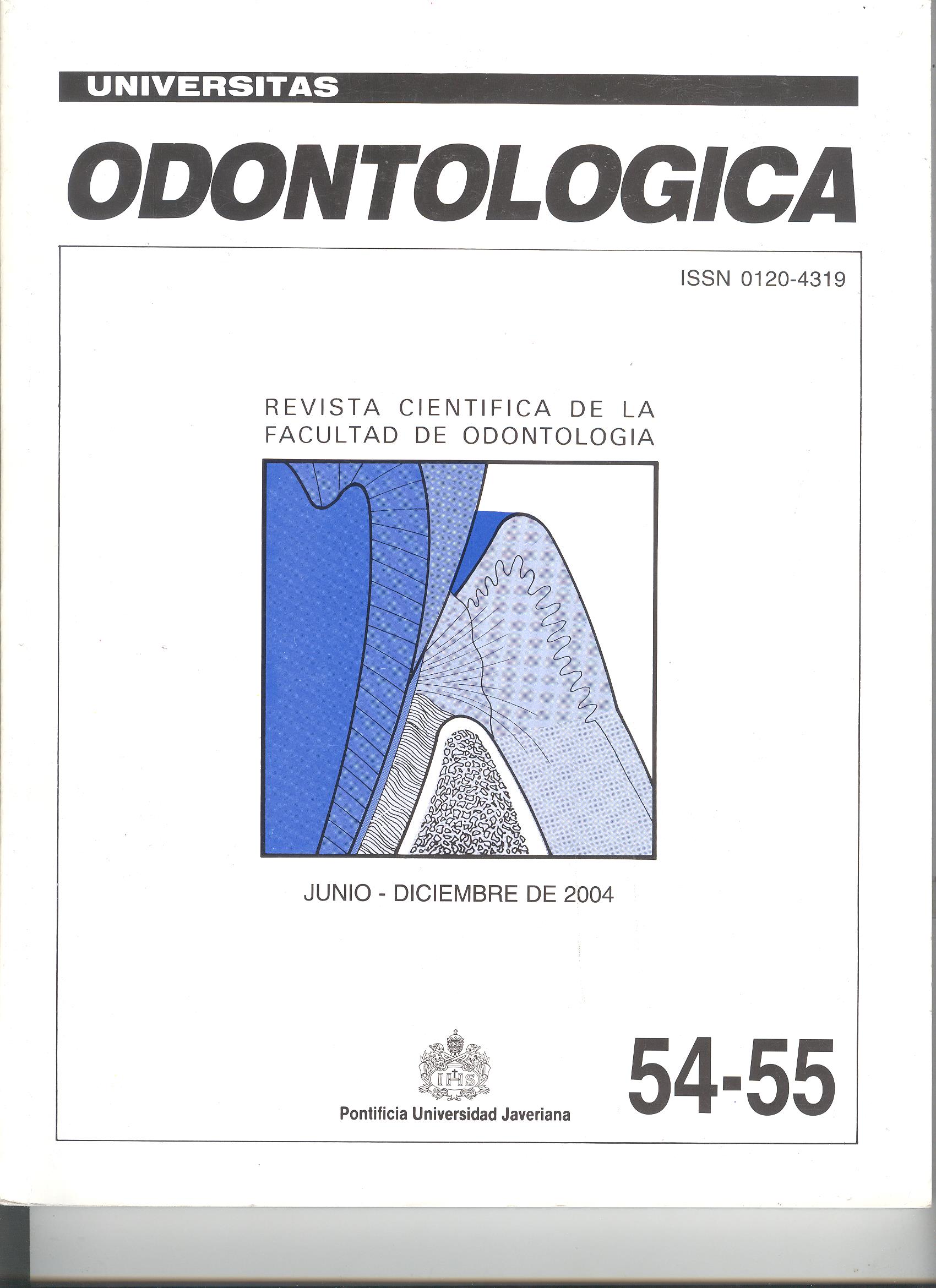Resumen
ANTECEDENTES: el aumento de lesiones personales que involucran huellasde mordedura en Colombia, hace necesario analizar tal evidencia; sin embargo, su análisis es controversial, debido al hecho de que las huellas de mordeduras son tan sutiles, que pueden ser ignoradas; existe diversidad de opiniones y poca evidencia sobre las características dentales de la población colombiana mestiza actual. OBJETIVO: analizar características dentales relevantes en la lesión patrón de la huella de mordedura por género y edad, para determinar si aporta evidencia al esclarecimiento de casos forenses. MÉTODOS:el diseño fue observacional. Se incluyeron en el estudio personas mayores de 15 años y se excluyeron aquellas que tuvieran aparatología ortodóntica o restauraciones anteriores. Las variables fueron: forma de los arcos superior e inferior, distancia intercanina, diámetro mesodistal (en milímetros), ausencia dental, malposiciones, diastemas, fracturas,desgastes, edad y género. Se obtuvieron impresiones dentales y se tomaron las medidas para realizar análisis de varianza no paramétrica y test de Fischer (p=0.05). RESULTADOS: las variables que resultaron estadísticamente significativas al ser relacionadas con el género y que podrían asociarse para identificar el perpetrador de la mordida, fueron: diámetro mesodistal de caninos superiores e inferiores, distancia intercanina superior, desgaste incisal del 22 y fractura incisal del 12. Ninguna característica fue significativa al relacionar con la edad. CONCLUSIONES: los resultados ponen en duda la confiabilidad de las huellas de mordedura, por lo cual su uso como evidencia, continúa siendo controversial.
Jiménez A. Memorias. X Congreso Nacionalde Medicina Legal y Ciencias Forenses. Bogotá,D. C., Colombia: Instituto Nacional de MedicinaLegal y Ciencias Forense, 2000; 2-4
Hernández R, Fernández C, Baptista P. Metodologíade la investigación. México DF, México:McGraw-Hill Interamericana, 1998
Bowers M. Arguments on the individuality ofhuman teeth. J Forensic Sci 1984 Jun; 14(3): 3
Herazo B. Antropología y epidemiologíabucodental colombiana, 1ª ed. Bogotá, D. C.,Colombia: Ecoe, 1992
Wheeler RC. Anatomía dental: fisiología y oclusiónde Wheeler, 7ª ed. México DF, México:McGraw-Hill Interamericana, 1996; 149,161
Vargas E. Deontología forense, 3ª ed. San José,Costa Rica: Medicina Legal, 1983; 40
Correa A. Individualidad por medio de las característicasestomatológicas, 1ª ed. México DF,México: Trillas, 1990; 20
Aquiles M. La odontoscopia, 2ª ed. Illinois, USA:Beth McEoin, 1990; 87-8
Casas JA, Valdés Y, Rodríguez JV, Polanco H,Herazo B. Odontología forense. Bogotá, D. C.,Colombia: Ecoe, 1995; 72, 74
Christensen H. Traumatología forense, 1ª ed.México DF, México: Limusa – Wiley, 1992; 104-5
Zagarra J. Odontología en la gran expediciónhumana: Los Embera de San francisco, Cauca.Univ Odontol 1996 Mar; 15(29): 33-4
Velásquez A. Estudio piloto correlacional entrelas características de dentición natural y lashuellas de mordedura. Trabajo de pregrado enodontología. Director: Casas JA. Bogotá, D. C.,Colombia: Facultad de Odontología, UniversidadEl Bosque, 2000; 7

Esta obra está bajo una licencia internacional Creative Commons Atribución 4.0.
Derechos de autor 2004 Pontificia Universidad Javeriana, Bogota, Colombia


